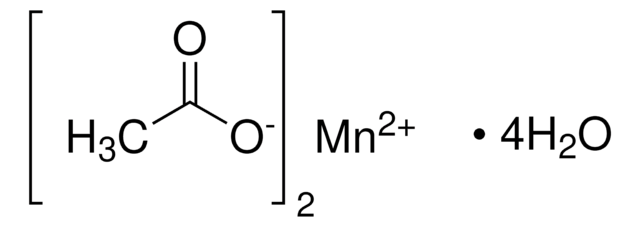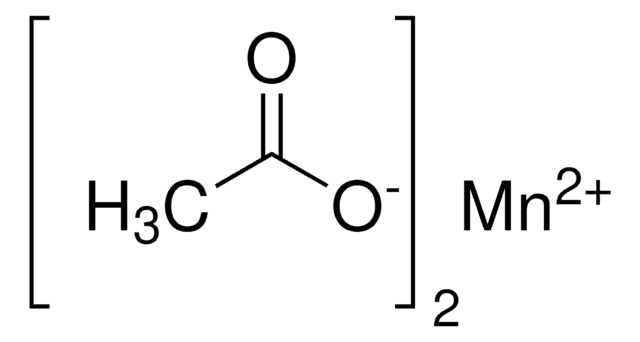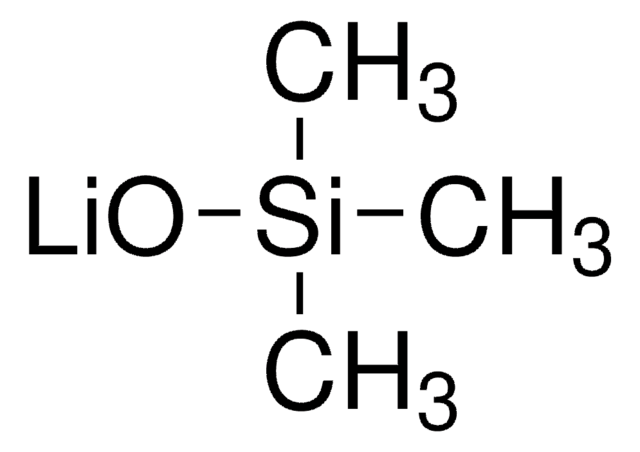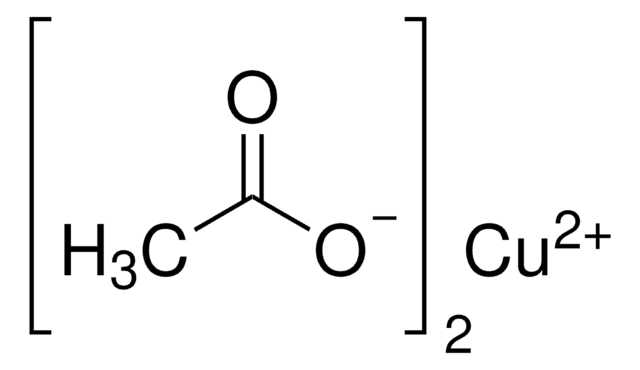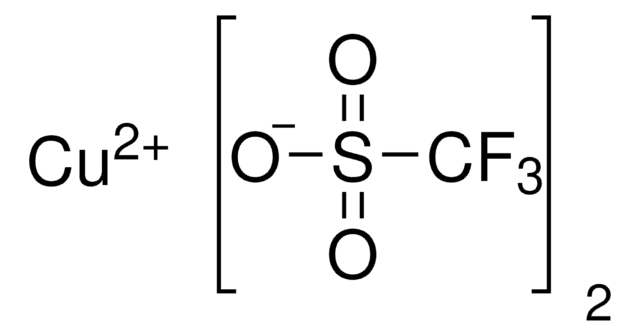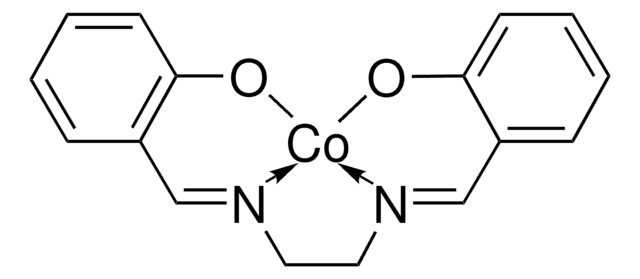399973
Cobalt(II) acetate
99.99% trace metals basis
Sinonimo/i:
Cobalt diacetate, Cobaltous acetate, Cobaltous diacetate
About This Item
Prodotti consigliati
Livello qualitativo
Saggio
99.99% trace metals basis
Stato
crystals and lumps
solid
Impiego in reazioni chimiche
core: cobalt
Impurezze
≤5% water
Punto di fusione
298 °C (dec.) (lit.)
Stringa SMILE
CC([O-])=O.[Co+2]
InChI
1S/2C2H4O2.Co/c2*1-2(3)4;/h2*1H3,(H,3,4);/q;;+2/p-2
QAHREYKOYSIQPH-UHFFFAOYSA-L
Cerchi prodotti simili? Visita Guida al confronto tra prodotti
Descrizione generale
Applicazioni
- A precursor to synthesize cobalt titanium oxide catalysts for the oxygen evolution reaction.
- A starting material to prepare polymer stabilized Co nanocatalyst for growing carbon nanofibers.
- A catalyst for direct amination of azoles under mild reaction conditions.
Cobalt(II) acetate can be:
- Used as a cobalt source in the synthesis of Lithium cobalt oxide (LiCoO2), which is a used as a cathode material in lithium-ion batteries.
- Used as a precursor to synthesize cobalt oxide nanoparticles via a simple direct thermal pyrolysis process. Co3O4 nanoparticles further used as a high-capacity anode materials in lithium-ion batteries.
- Used as an additive in the perovskite precursor solution to control the crystal growth and improve the performance of fully screen-printable hole-transport material (HTM)-free mesoporous perovskite solar cells (PSCs).
Avvertenze
Danger
Indicazioni di pericolo
Consigli di prudenza
Classi di pericolo
Acute Tox. 4 Oral - Aquatic Acute 1 - Aquatic Chronic 1 - Carc. 1B Inhalation - Eye Irrit. 2 - Muta. 2 - Repr. 1B - Resp. Sens. 1 - Skin Sens. 1
Codice della classe di stoccaggio
6.1D - Non-combustible acute toxic Cat.3 / toxic hazardous materials or hazardous materials causing chronic effects
Classe di pericolosità dell'acqua (WGK)
WGK 3
Dispositivi di protezione individuale
Eyeshields, Faceshields, Gloves, type P3 (EN 143) respirator cartridges
Elenchi normativi
Forniamo informazioni su eventuali restrizioni prevalentemente per i prodotti chimici. Per altre tipologie di prodotto siamo in grado di fornire soltanto informazioni limitate. Nessuna segnalazione significa che nessuno dei componenti è citato in un elenco. È dovere dell’utilizzatore assicurarsi che il prodotto venga impiegato in maniera sicura e a norme di legge.
EU REACH SVHC Candidate List
EU REACH Annex XVII (Restriction List)
Scegli una delle versioni più recenti:
Certificati d'analisi (COA)
It looks like we've run into a problem, but you can still download Certificates of Analysis from our Documenti section.
Se ti serve aiuto, non esitare a contattarci Servizio Clienti
Possiedi già questo prodotto?
I documenti relativi ai prodotti acquistati recentemente sono disponibili nell’Archivio dei documenti.
I clienti hanno visto anche
Articoli
Nanostructured Materials Through Ultrasonic Spray Pyrolysis
Nanomaterials are considered a route to the innovations required for large-scale implementation of renewable energy technologies in society to make our life sustainable.
Il team dei nostri ricercatori vanta grande esperienza in tutte le aree della ricerca quali Life Science, scienza dei materiali, sintesi chimica, cromatografia, discipline analitiche, ecc..
Contatta l'Assistenza Tecnica.